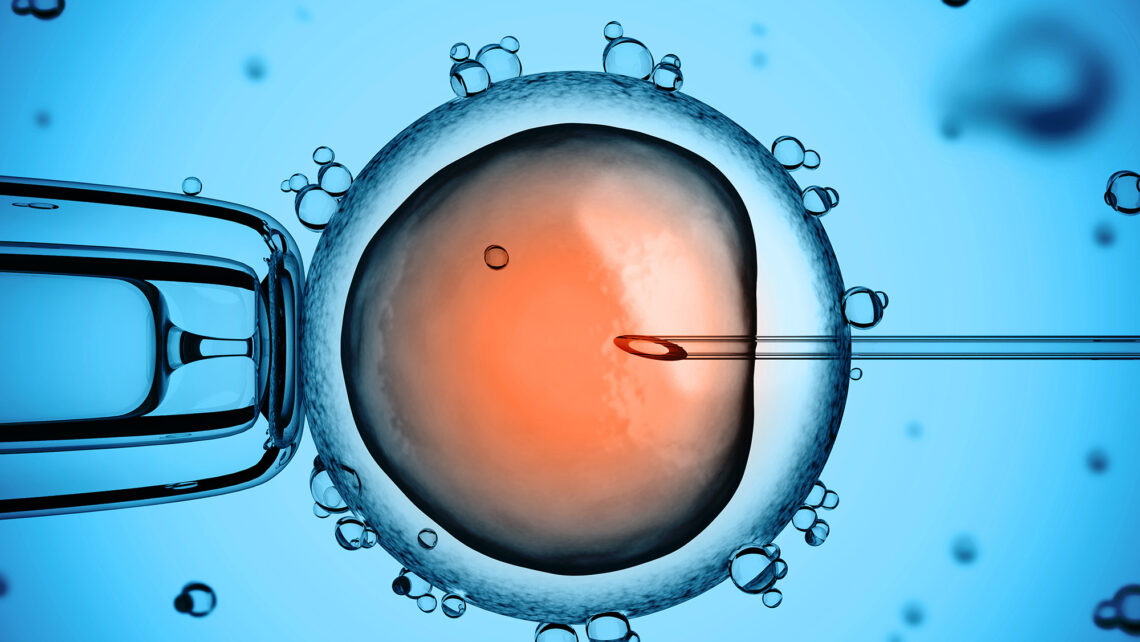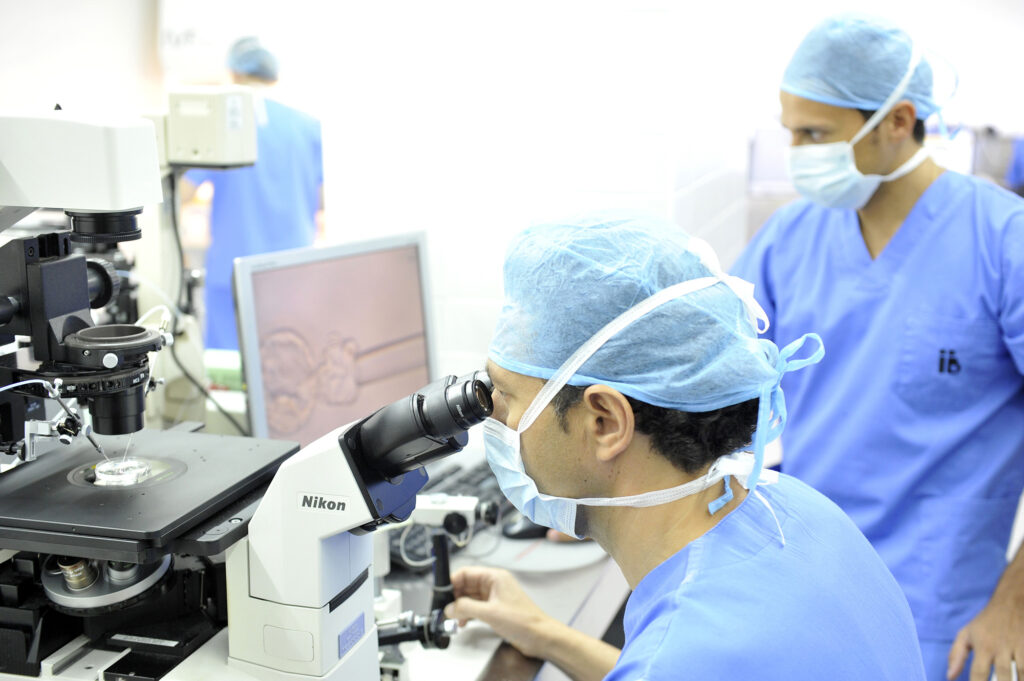
Fertilization failure
Fertilization is a key step in sexual reproduction, is the union between a healthy egg and sperm, giving place to a zygote: the first cell of a living person.
In the assisted reproduction lab, fertilization is in vitro. Embryologist’s favour the gametes encounter and, classify the obtained embryos, which later, in the laboratory, will develop as blastocysts to be later transfer into the mother’s womb and become a healthy chid gestation, achieving the patients’ dream: become parents.
But this, that might seem easy, is the result of several highly complex processes, which must be done in a very precise way to reach the desired end.
Índice
What is the fertilisation process?
Following, we are going to review these processes and see why, sometimes, what seems so obvious, fails, leading to very difficult situations for patients undergoing fertility treatment.
1.- Male and female gamete generation
The gametes, egg and sperm, are formed by a process called gametogenesis:
- In males: The spermatogenesis takes place in testicles, where the meiosis is constantly done and the haploid cells are formed, giving place to competent and mature sperm.
- Women, however, are born with a limited number of eggs, from the oogenesis that takes place in the maternal uterus, and ends with the formation of cells stoped in the middle of meiosis. It will remain in that stage until puberty, at which time the number of eggs begins to decline with each menstrual cycle. The quality and number of eggs of each woman will determine her fertility. The oocytes’ Meiosis ends when the fertilization of the egg takes place by a healthy sperm.
2.- Egg and sperm union: fertilisation phases
The gametes fusion, fertilization itself, also takes place in several very complex and highly regulated biochemical steps both in vivo and in the laboratory. These steps include:
- Sperm hyperactivation.
- Sperm recognition of the egg’s pellucid zone.
- The sperm union with the pellucid zone and the acrosomal reaction.
- Egg’s penetration.
- Egg’s activation.
- Cortical reaction and the polyspermy block.
- Decondensation of the sperm nucleus (forming the male pronucleus).
- Completion of the egg’s meiosis and
- Formation of the female pronucleus.
This is how a zygote is properly formed.
Assisted reproduction in lab fertilisation methods

There are two techniques of in vitro fertilization (IVF) that are carried out in a laboratory: conventional IVF, or sperm microinjection (ICSI). In both cases, the gametes are prepared and capacited in vitro, emulating the processes that take place in vivo, trying to maximize the chances of a correct fertilization.
Fertilization rate per inseminated egg is around 70%, and per microinjected egg it is around 80%.
What could cause a fertilisation failure or a fertilisation low rate?
Errors in the gametogenesis process, which as we have seen is a highly complex process, can lead to an incorrect formation of gametes, leading to a low fertilization rate, or a failure. To prevent this from happening, before starting each cycle, the specialists must study each case in detail and offer patients a case evaluation, after a deep study.
1.- Sperm alterations
The sperm quality is evaluated according to its morphology, motility and sperm concentration in the seminal sample. Furthermore, other parameters such as thesperm’s DNA degree fragmentation or its chromosomal load can guide us to find out the quality, as its relation with infertility or miscarriage possibility has been studied. Sperm quality may vary over time, as sperm is constantly generated, and also the process can be affected by external factors such as fever processes, drug administration, stress, food, lifestyle habits, tobacco, alcohol, etc. The sperm sample study is a key part in the evaluation of a fertility treatment to be applied on each case, as a low sperm quality is associated with low fertilization by conventional IVF, an alteration in embryonic development and a low implantation rate and success of the IVF cycle.
2.- Oocytes quality alterations
The eggs quality is the key to female fertility, and will determine the embryo possibilities each egg develop. As in the previous case, unhealthy lifestyle habits or certain pharmacological treatments can decrease the egg’s quality, but there are intrinsic factors associated with a decrease in the egg’s quality, such as ovarian reserve, obesity, maternal age or endometriosis.
What is the fertilisation failure rate in an in vitro fertilisation treatment?
When a conventional IVF is performed in the laboratory, in 10% of cases a fertilization failure occurs, that is, none of the eggs are fertilized correctly. Using the ICSI technique, this happens in 3% of cycles.
What should we do when the in vitro fertilisation fails?
In these cases, an exhaustive study of the case is carried out, to try to reach a conclusion about what could have led to this result, and propose solutions to the patients. The eggs or sperm, or both, low quality, is usually the main reason for these unusual failures, as we have previously read in this review, the processes that take place for the formation of gametes and zygotes are very complicated, and failures or regulation are associated with an increase in infertility. The good news is that in a second attempt after a total fertilization failure, usually this result is not repeated.
IT MAY ALSO BE OF INTEREST TO YOU:
- In vitro fertilization (IVF) in Instituto Bernabeu
- Implantation Failure and Repeated Miscarriage Unit
- Poor Ovarian Responders Treatment Unit
- Specialised healthcare in Instituto Bernabeu endometriosis unit
- Pro-fertility medical treatment for obesity
- NEGATIVE IVF: Everything you need to know after a failed IVF
- Choosing a fertilisation technique when oocyte counts are poor. IVF or ICSI?
- What are the potential complications associated with IVF?
- Is there hope for me following fertilisation failure after ICSI?
Dr Leyre Herrero, a biologist at Instituto Bernabeu
